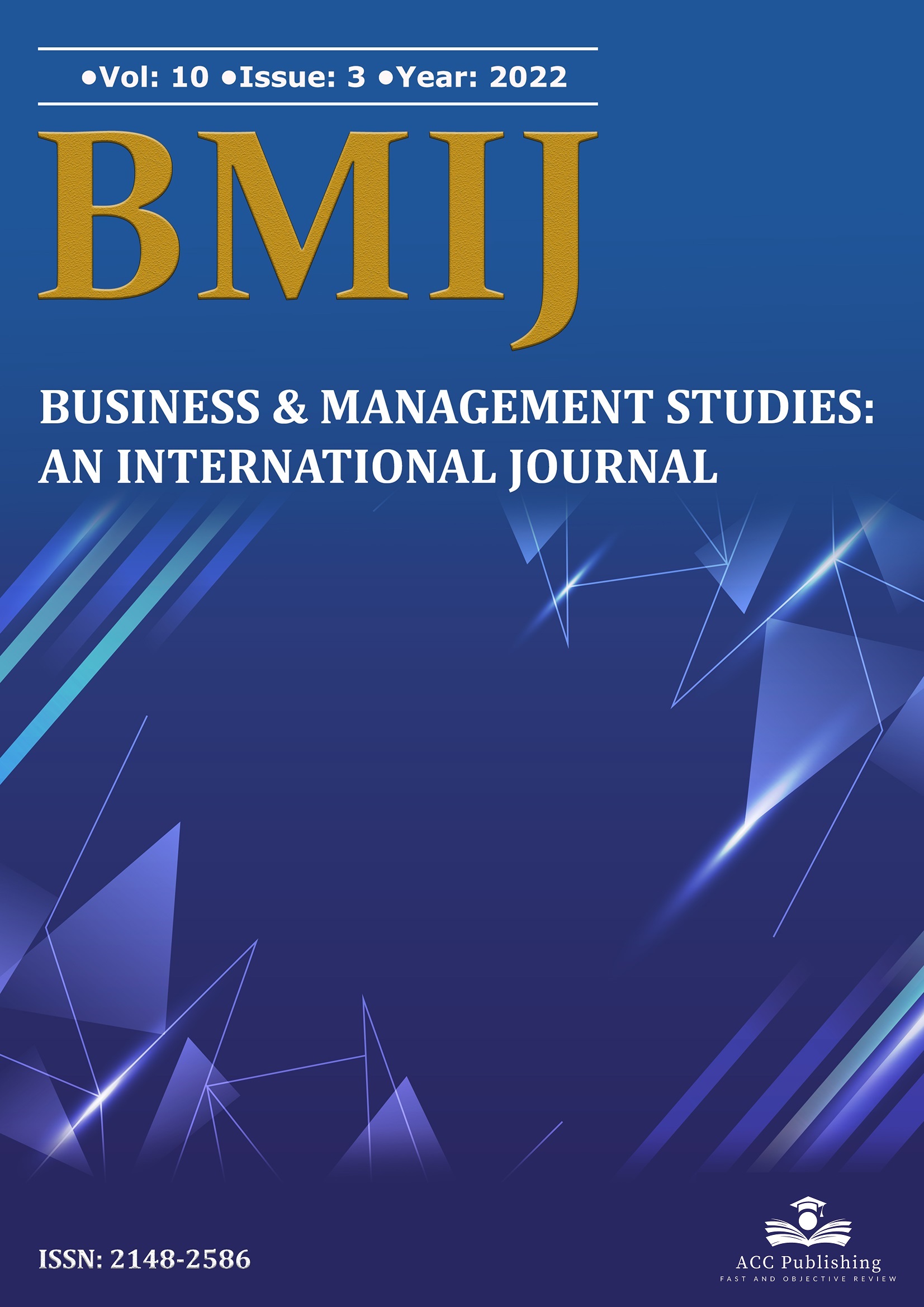Revisiting the bank lending channel in Turkey under the unconventional monetary policy framework

Published 2022-09-25
Keywords
- Bank Lending, Credit Channel, Monetary Policy, Transmission Mechanisms, Turkey
- Banka Kredileri, Kredi Kanalı, Para Politikası, Aktarım Mekanizmaları, Türkiye
How to Cite
Copyright (c) 2022 Ekin Ayşe ÖZŞUCA

This work is licensed under a Creative Commons Attribution-NonCommercial-NoDerivatives 4.0 International License.
Abstract
This paper provides empirical evidence regarding the bank lending channel under Turkey's unconventional monetary policy framework. Towards this end, the impact of changes in monetary policy stance on bank credit growth is investigated using a dynamic panel data modelling approach between 2011 and 2019. The empirical results reveal cross-sectional heterogeneity in the loan supply of Turkish banks following a change in monetary policy, which implies an operative bank lending channel in the post-2010 period of the policy mix. Small, liquidity-constrained, and inadequately capitalized banks tend to experience sharper contractions in their lending during monetary policy tightening episodes. Besides, in terms of bank-specific characteristics, the findings demonstrate that larger bank size and capital is associated with a higher loan supply. On the contrary, liquidity is found to harm bank lending.
Downloads
References
- Aktaş, C., & Taş, B. K. O. (2007). The Bank Lending Channel InTurkey: Effect of Capital Adequacy Ratio. BDDK Bankacılık ve Finansal Piyasalar Dergisi, 1 (1), 61-74.
- Alper, K., Hulagu, T., & Keles, G. (2012). An Empirical Study on Liquidity and Bank Lending, CBRT Working Paper, No:12/04.
- Arellano, M., & Bover, O. (1995). Another Look at the Instrumental Variable Estimation of Error-components Models. Journal of Econometrics, 68(1), 29-51.
- Aydın, B., & Igan, D. (2010). Bank Lending in Turkey: Effects of Monetary and Fiscal Policies. Emerging Markets Finance and Trade, 48 (5), 78-104.
- Başçı, E., & Kara, H. (2011). Financial Stability and the Monetary Policy. CBRT Working Paper No.11/08.
- Bernanke, B. S., & Gertler, M. (1995). Inside the black box: the credit channel of monetary policy transmission. Journal of Economic perspectives, 9 (4), 27-48.
- Binici, M., Erol, H., Kara, H., Özlü, P., & Ünalmış, D. (2013). Interest Rate Corridor: A New Macroprudential Policy Tool. CBT Research Notes in Economics, No: 2013-20.
- Binici, M., Kara, H., & Özlü, P. (2016). Unconventional Interest Rate Corridor and the Monetary Transmission: Evidence from Turkey. CBRT Working Paper, No: 16/08.
- Blundell, R., & Bond, S. (1998). Initial Conditions and Moment Restrictions in Dynamic Panel Data Models. Journal of Econometrics, 87(1), 115-143.
- Brooks, P. K. (2007). The bank lending channel of monetary transmission: does it work in Turkey? IMF Working Papers, No: 07/272.
- Çavuşoğlu, T. (2002). Credit transmission mechanism in Turkey: an empirical investigation. ERC Working Papers in Economics, 1-30.
- Çatik, A. N., & Karaçuka, M. (2012). The bank lending channel in Turkey: has it changed after the low-inflation regime?, Applied Economics Letters, 19 (13), 1237-1242.
- Ehrmann, M., Gambacorta, L., Martinez-Pages, J., Sevestre, P., & Worms, A. (2003). Financial Systems and the Role of Banks in Monetary Transmission in the Euro Area. In I. Angeloni, A. K. Kashyap & B. Mojon (Eds.), Monetary Policy Transmission in the Euro Area (pp. 235-269). Cambridge: Cambridge University Press.
- Gambacorta, L. (2005). Inside the bank lending channel, European Economic Review, 49, 1737-1759.
- Kara, A. H. (2012). Küresel Kriz Sonrası Para Politikası. CBRT Working Paper, No.12/17.
- Kashyap, A. K., & Stein, J. C. (2000). What Do a Million Observations on Banks Say About the Transmission of Monetary Policy. American Economic Review, 90 (3), 407-428.
- Kılınç, Ş. N., & Kılınç, E. C. (2020). Türkiye’de Banka Kredi Kanalının Etkinliği. Afyon Kocatepe Üniversitesi Sosyal Bilimler Dergisi, 22 (2), 418-431.
- Kishan, R. P., & Opiela, T. P. (2000). Bank Size, Bank Capital, and the Bank Lending Channel. Journal of Money, Credit, and Banking, 32 (1), 121-141.
- Özatay, F. (2011). Merkez Bankası’nın Yeni Para Politikası: İki Hedef-Üç Ara Hedef-Üç Araç. İktisat İşletme ve Finans, 26 (302), 27-43.
- Özşuca, E.A., & Akbostancı, E. (2013). An Empirical Analysis of the Bank Lending Channel in Turkey. İktisat İşletme ve Finans, 28 (328), 33-50.
- Partovi, E., & Matousek, R. (2018). Has the Bank Lending Channel Changed in Turkey after the Crisis in 2001? Available at SSRN: https://ssrn.com/abstract=3192499 or http://dx.doi.org/10.2139/ssrn.3192499
- Serel, A., & Güvenoğlu, H. (2019). Banka Kredi Kanalının İşleyişi: Türkiye Uygulaması (2011-2018). Business and Economics Research Journal, 10 (4), 867-883.
- Turguttopbaş, N. (2019). The Bank Lending Channel of Monetary Transmission in Turkey. Economics and Business Research Journal, 10 (2), 313-326.
- Uslu, N., & Karahan, P. (2016). An Analysis on the Efficiency of Bank Lending Channel in Turkey. Journal of Business Economics and Finance, 5 (2), 206-217.


